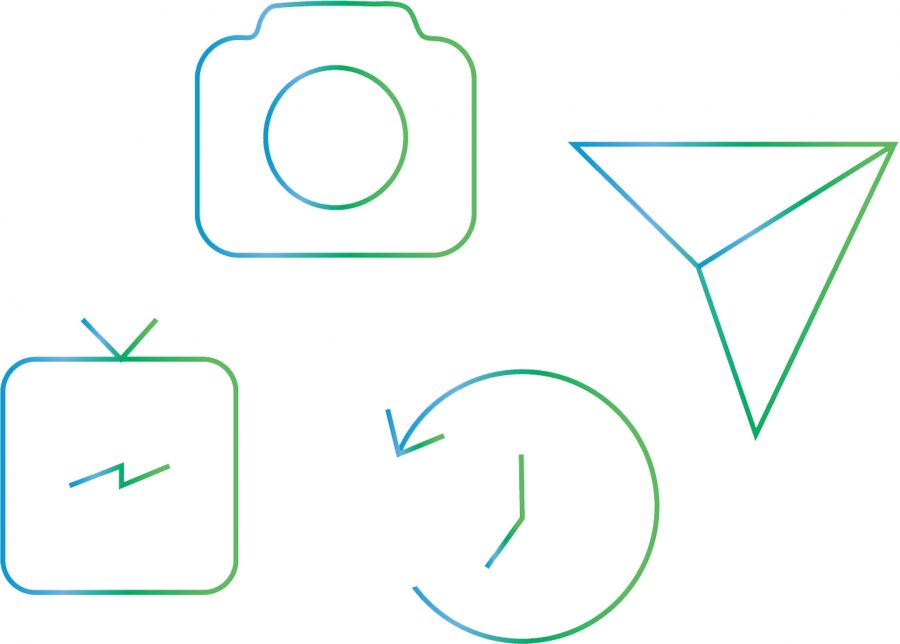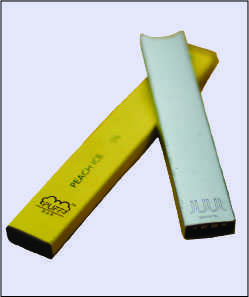From Leonardo da Vinci’s dissection of corpses in the late 1480s to the research and medical breakthroughs regarding 3D printing for organ transplants in the 21st Century, humanity has time and again shown its fascination with the future of medicine.
Technology has long generated scientific discovery, innovation and exploration, yet the true purpose of medicine stems from humanity’s innate desire to help others and alleviate suffering.
British clinical psychologist Paul Gilbert reasoned in his 1989 book, “Human Nature and Suffering,” that people desire to both compete and work with one another as well as to care for and receive care from each other, as is the case for medical professionals in hospital environments.
Although she comes from a family of doctors, senior Eleanor Fay never felt pressured to follow in the footsteps of her father and two of her older brothers. Fay said her family’s conversations during the holidays tend to involve a topic related to medicine, which exposed her to a potential future in the medical world from an early age. She has a passion for helping others and possesses the important ability to work well in stress inducing and pressure filled situations.
Fay decided to pursue a path aligned with the medical sciences by taking the RBHS human anatomy and physiology class and an Emergency Medical Technician (EMT) class, which is offered through the Columbia Area Career Center. While she was unaware the EMT course existed until last year, following a friend’s recommendation she signed up to take it.
“I thought that since I’m interested in pursuing a career in medicine it might look good if I was able to get my EMT license,” Fay said. “It would also give me a good job during college, and I’m just generally interested in all kinds of medicine, and being an EMT is a really good way to get started and to kind of put yourself out there in the world of medicine to just learn the basics and learn how to take care of people.”
The path to becoming a doctor is far from linear, and rarely easy, something Matt Schuver, a second-year medical student at the University of Missouri-Columbia, can attest to. Schuver said working in the field of medicine allows him to practice his critical thinking skills and presents him with new challenges daily. Spending time around his personal physicians, especially his “intelligent and charismatic” pediatrician, made earning a medical degree appeal to him.
“Growing up I pretty much just had my pediatrician who was my main doctor,” Schuver said. “He’s just always been a very caring person, and I just really enjoyed — I think that he was just a very good role model for me, just being an intelligent person and always wanting to help me and other people. And I had the opportunity to shadow him while I was an undergrad, actually, and just watching him work with other people and seeing how caring he is and how he can help other people really inspired me to follow in his footsteps.”
Schuver’s journey to medical school was long and arduous, but with the support of his wife he persevered. As an undergraduate, Schuver pursued a degree in biochemistry. During his junior year of college, he said he followed the “normal path” of applying to medical school, including taking the Medical College Admission Test (MCAT) and sending in his application. This is typically a year-long process, and students learn by the time they get to their senior year whether or not they have been accepted. Schuver was not accepted into medical school the first time he applied, forcing him to reconsider if becoming a doctor was still the road he wanted to follow or if continuing his education was his best course of action. At the time, two years outside of school seemed like a small eternity to him, but Schuver was tenacious and adopted a “future-thinking” mindset that allowed him to put his time and his goals into perspective.
Of all MCAT test takers, nearly half will take it a second time because of inadequate preparation before their first attempt.
Source: www.princetonreview.com
“I was considering potentially going to graduate school and working on either a master’s or PhD in biochemistry, but there was just something that kept telling me that I really wanted to continue on with medicine,” Schuver said. “So that’s when I went back to St. Louis for a couple years, and I worked at WashU in research as well as the scribe in the emergency room. And just that experience there really reaffirmed that, yes, I do want to continue on in medicine. So that kind of pushed me to keep going, and luckily get to where I am now.”
In Fay’s EMT class, students go over skill sheets as a way to practice how to respond in a variety of situations during the first semester. The class teaches them how to work as EMTs and conduct emergency medicine in a prehospital setting. Because the medicine they learn would be applied outside of a hospital, Fay said it can be “a little unethical sometimes” since, in her experience, the job of an EMT is to first and foremost save a person’s life and transport patients to a medical facility for better care.
“In the hospital setting, it’s pretty controlled. You have a pretty calm, stable environment, but whenever you’re going out on a call for EMT you don’t know what you’re getting into. It could be a college party; it could be a car accident. It could be a really bad situation, and you just gotta know what you’re prepared for,” Fay said. “So it’s unethical ‘cause you gotta quick think and kind of do whatever the situation requires. There’s no definite, solid way to do things. You can’t memorize just a set list of ways how to do things, but you do need to just have common sense to go out there and have quick thinking skills to be able to conduct yourself well in emergency situations.”
Fay found it easy to adapt to the unpredictability of EMT work and devised creative ways to help patients during in-class scenarios. In these mock-emergencies, students must come up with effective solutions to difficult situations in order to save lives. When she is under stress, Fay’s heart rate speeds up, and she feels a sense of urgency driving her to take action. It increases her focus and makes her work faster through a sharpening of her senses. During scenarios where a patient is “under trauma,” Fay said she works best under pressure when she has a partner handling the situation by her side who can help her remain calm.
“Especially if you’re doing EMT work [for trauma care], you’re trained to always tell your partner what they’re doing well and then kind of help them along if they’re doing something not so well,” Fay said. “But then they also kind of keep you accountable.”
Outside of a classroom setting, losing a patient is the reality of what professional EMTs face on the job. While the idea of losing a patient is unpleasant, Fay’s teacher taught her she can learn something from every death that will make her more prepared to save another person’s life in the future. Although Fay said her instructor talked to the class about how to handle death and how to talk to a patient’s family if that is to occur, she must still prepare herself mentally to face death first-hand in the field.
“I’m going to do everything in my ability to help the person survive. I think that every decision I make is either going to affect a patient positively or negatively, but in the situation, the fact that I’m trying to save a life and I’m trying with everything that I have, I know that if they die that’s very sad but I did everything that I could,” Fay said. “And I just hope that by doing everything that I can, that person’s death may be [not] as significant in my mind because I did everything that I could to help them live.”
Working in a profession where she is fully present appeals to Fay. Becoming an emergency room physician is an attractive option for her because of the job’s fast-paced atmosphere and the role collaboration plays in saving lives.
“The best part [of class] is definitely the team atmosphere that we have. Whenever you’re running an EMT call, you have your partner with you, and it’s really cool to do medicine and save lives with other people who are also your friends,” Fay said. “And just kind of coming together to be able to have that kind of community where we’re all interested in medicine, we’re all interested in going out and just helping people in general.”
For a student to do well on the MCAT, it takes between 200 and 300 hours of test preparation.
Source: www.princetonreview.com
While junior Sarvika Mahto did not come from a family of doctors, her passion for volunteering and her desire to find a community of people who share her interest in helping others drew her to the realm of medicine. During a biomedical class she took, Mahto’s teacher brought up the idea of joining HOSA-Future Health Professionals (HOSA) to her class as a way to further their understanding of medical topics. Through HOSA, students are able to compete on a state and potentially an international level. Students in the organization spend their time studying for biomedical based competitions or participating in fund-raisers.
Both during competition and at regular hospital check-ups, Mahto works to surround herself with people who encourage collaboration and teamwork. Growing up, Mahto said she could see herself in practically every potential career, but she ultimately decided to pursue a path to becoming a doctor. Depending on how she deals with the “gore” of medicine, specifically surgery, Mahto said she is interested in either working in the surgical room or helping children with mental health problems.
“Obviously if someone is suffering from an illness, it’s going to have some sort of impact, but I never realized how much the person itself can have an impact,” Mahto said. “I was able to work with a doctor for just a couple days, but just seeing how much of this person could influence someone’s day or how they took certain news really opened my eyes as to how much of an impact this one person can have on someone’s life.”
The accumulation of knowledge and the ability to help those in need appealed to Fay, just as it did to Mahto and countless other current and aspiring medical professionals. The hours of study required to receive a medical degree, the years in residency and every other task, both minuscule and major, required of people in medical professions test their abilities and their commitment to their chosen field.
Prior to his acceptance into medical school, Schuver shadowed extensively, worked in clinical settings for a couple years and was a medical scribe in an emergency room in St. Louis for a year. Along with this, he spent some time volunteering at St. Mary’s Hospital in St. Louis where he was on a cardiac intensive care unit. Because he did not have any medical credentials, Schuver said he assisted the nurses however he could by answering the phones and working with doctors. During his time at Washington University in St. Louis, he helped with clinical research in clinic at the cancer center.
“I basically worked with the doctors and the patients as well for patients that were put onto clinical trials. So these were research studies where they were either testing a new type of medication or looking for new uses for it, medications for specifically cancer patients,” Schuver said. “So I would work with them and make sure that we were following the study protocols appropriately. I would make sure everything would be documented appropriately. And I was spending plenty of time with the patients, teaching them about the study and how to follow the study appropriately.”
Schuver said real-life situations and practice, as well as years of study and hard work, are the best ways to prepare for a career in medicine. Although she is still in high school, Mahto has worked actively to increase her understanding of how people in medical fields practice medicine on a day-to-day basis. In whatever career she decides to pursue, Mahto looks forward to having a positive influence on someone’s life every day. After shadowing a doctor for a few days, she learned about the ins and outs of working in a hospital and treating patients. Witnessing doctors in action showed her that becoming a medical professional is a viable career for her future.
“Just based off of checkups that I go to, I didn’t necessarily realize that that’s not all there is to a doctor’s life. They don’t just go from patient to patient like checking up on people. There’s a lot of you [having] to collaborate with a lot of different other departments in the hospital itself, which again the whole closeness with everybody was something I got to see,” Mahto said. “They had to work with laboratory [technicians], people who work in the labs, to get their results and work with other people to [help patients]. I worked with a doctor who also had a cancer patient, so you got to see them work closer with radiologists and surgical oncologists and see how they all work together to make this one person’s life easier.”
Schuver’s experience working one-on-one with patients is limited to his time in the cancer center at Washington University in St. Louis. His interactions there inspired him to continue pursuing a medical degree. The first time Schuver saw a patient happy about his work was after he helped a woman who was apprehensive about how her condition was being handled through the enrollment process into a clinical trial.
“When I was able to go over to her and let her know that she was eligible for the trial and we could start this new treatment for her very, very soon, she was extremely grateful for what I did for her, even though in my mind it was mostly paperwork and getting everything together for her,” Schuver said, “but she actually stood up and gave me a big hug and was crying and was so happy that I was able to help her get to this next step. And that was certainly very gratifying for me.”
Though cancer has not directly affected Mahto, she said she knows people it has impacted. After one of her close friend’s aunt was diagnosed with cancer, Mahto said her friend became highly motivated to become an oncologist. Her friend’s newfound passion inspired Mahto to more closely examine potential career paths enabling her to improve the quality of other’s lives. She has already taken Principles of Biomedical Sciences as a class and is currently enrolled in Human Body Systems and Advanced Placement Biology at school.
Mahto is also considering taking the EMT course next year. Along with these courses, she wants to further her involvement in the medical world and plans on working as a volunteer at Boone Hospital Center during the summer so she can learn more about what her future could look like and how she can better help others.
“I feel like although I might not be able to personally have a huge effect on the medical world as an individual, I would hope that I could be a part of a mass of people who have some sort of big influence on [the future], whether it be technology or some sort of new innovation,” Mahto said. “Although I’d love to personally be recognized for something, I think even being part of a movement or some sort of mass that had a large impact on the medical sphere as a whole would be fun.”
What motivates you to follow your passion? Let us know in the comments below.


















































































